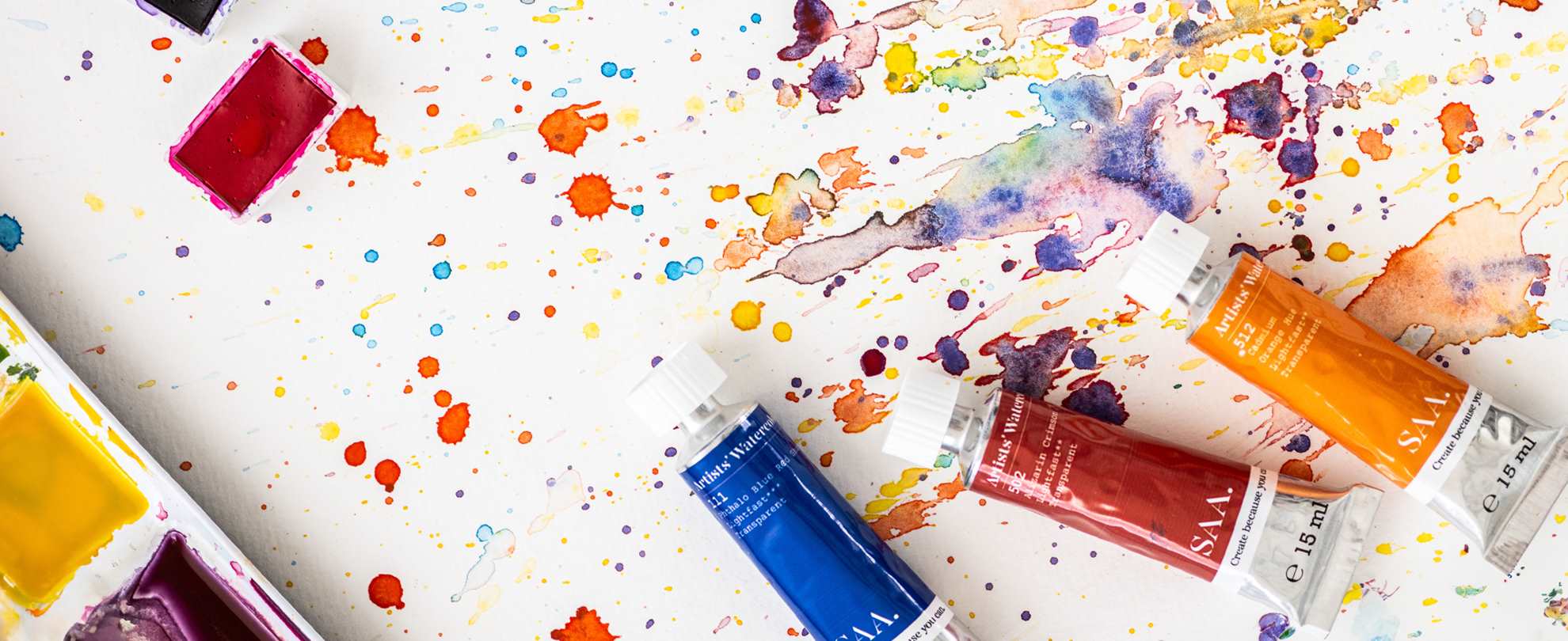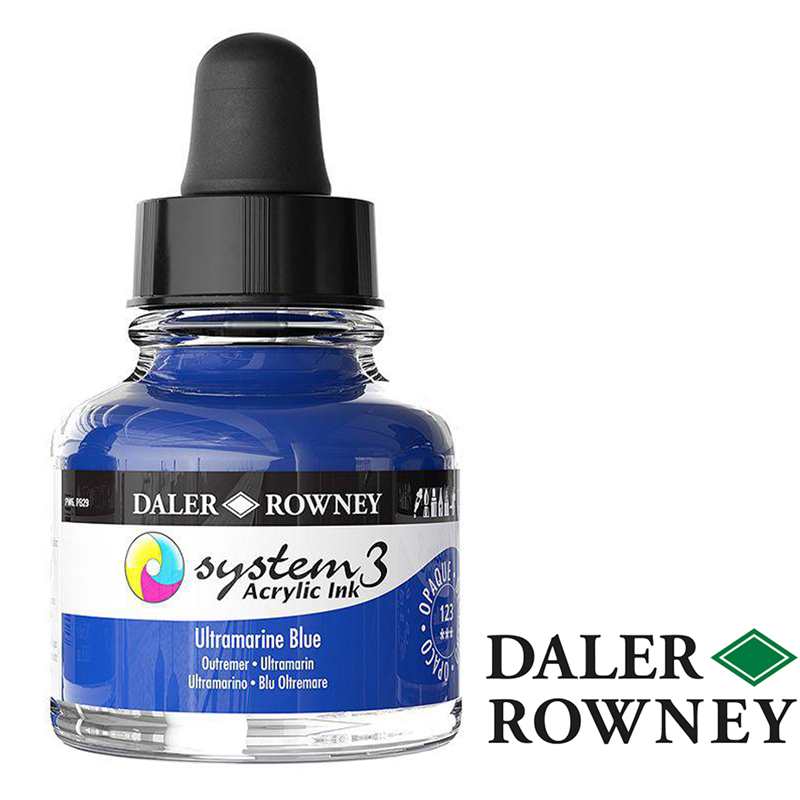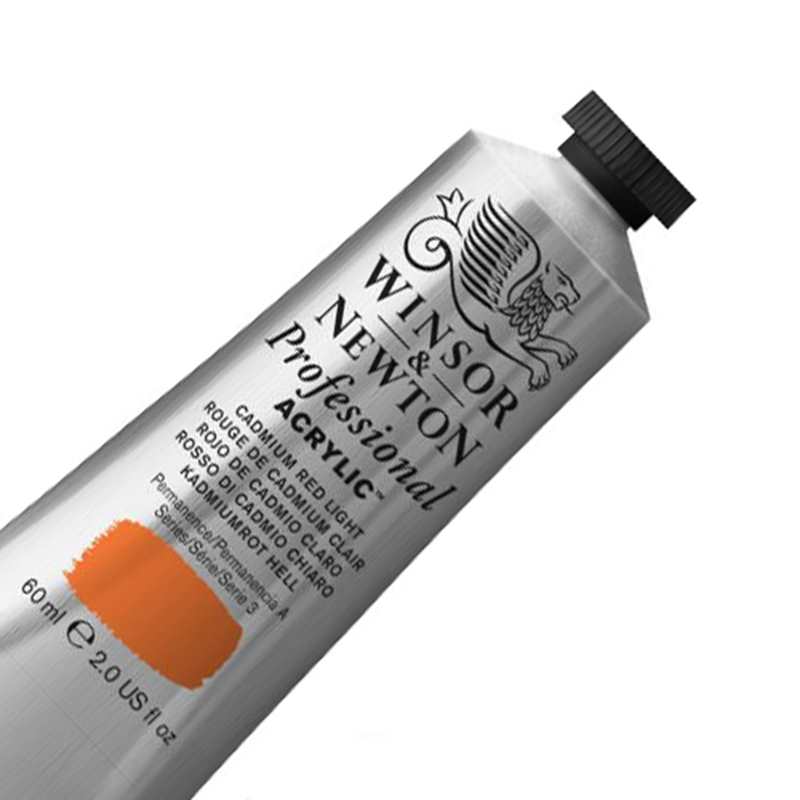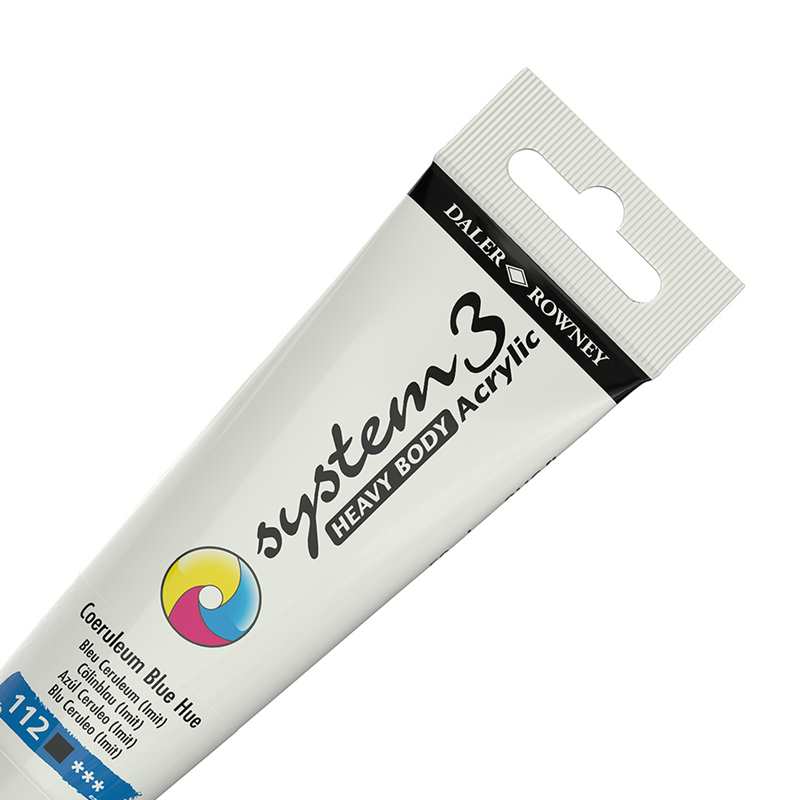
What makes Acrylic paint unique?
Acrylic paint is made up of pigments mixed with a synthetic polymer resin as a binding agent. The biggest advantage of acrylic paint is its quick-drying quality, especially useful when applying layers, making them perfect for adding texture to your paintings. As they are a water-based medium, they can be diluted with water to create washes, glazes or impasto applications. Once dried however, they form a tough flexible plastic-like, water-resistant coating that does not yellow and reveals no sign of ageing. It's worth noting here, that there are now acrylic paints available that can be re-activated using a specially developed solution. Interactive Acrylics is one of these.
There are different grades of acrylic paint; usually classed as professional or artist quality and student quality. Factors that determine this quality include pigment load (concentration of pigment), quality of a pigment, and quality of a binder.
Because of its unique binder, acrylic paint can be applied to most surfaces, commonly canvas and paper, but also experimental surfaces like fabric, cloth and stone, making it one of the most versatile art mediums.


Artist Quality
Artist quality paints have a higher pigment load to binder than student quality meaning that the colours are more vibrant and have a better covering power. The finest, purest and the most expensive pigments are used in artist ranges, and there will be fewer Hues colours. Hues are colours made using synthetic, less expensive pigments as an alternative to the high cost, rarer, or difficult to source pigments.
The pigments tend to be much more finely ground and will have a bigger choice of colours. Due to the wider range of pigments, manufacturers will series the distinct colours according to how expensive the pigment used in the colours are, The Series in Artist paints will range from 1 to 4 / 5 with some expensive and rarer colours rated as series 6 and above by the manufactures. In an Artist quality range, many more colours will be single pigments which is important for vibrancy and colour mixing, as mixing colours with numerous pigments can become muddy and dull.

Student Quality
These are an affordable range of paints that have a lower pigment to binder ratio making them less vibrant than Artist quality paints and offering less pain coverage. Due to the higher binder to pigment ratio, there can be a greater colour shift with some colours. Student paint often have a smaller colour range and the series will normally range between 1 –2.
There will be more Hue colours that are made to closely colour match the original pigment colour but use mixes of pigment or less expensive alternatives. There are different qualities for Student ranges from good quality ranges for the professional or amateur artist to the ranges aimed at early school years.


Types of Acrylic Paint
The thickness of acrylic paint can vary from brand to brand and there are different viscosities of acrylic paint:
Heavy Body Acrylics - these are high viscosity paints that are thick straight from the tube and retain their shape. When applied brush marks can still be seen, they are fun to use with a painting knife for impasto techniques and can be scraped and moulded to create dimensional textures.
Soft Bodied Acrylics -These are a medium viscosity paint that has a soft and creamy body. This is not as stiff as the Heavy bodied paint and flattens out a little when squeezed straight from the tube, its softer consistency means that it will cover large areas without visible brush strokes.
Fluid acrylics –These are more fluid than the Soft body acrylic, but still have the same pigment concentration. They can be poured straight from the bottles for dripping or pouring techniques and are perfect for use in detailed work.
Acrylic Ink –These are the most fluid of the range which means they can be used with a variety of exciting tools like calligraphy pens, dip pens, fine brushes and airbrushes. Liquid acrylics are available in bottles with dropper caps, as spray paints and acrylic markers. These are similar to concentrated inks – very bright and especially good for watercolour effects and washes.


So, which acrylic paint is the best?
Judging the 'best' acrylic paint is all down to personal preference and what you are looking for in acrylic paint. Acrylic paints come in a wide variety of colours and generally fall into two categories: Artist's quality and Student quality, the difference being the vibrancy of colour, as Student paints contain less pure pigment in proportion to the binder. This is reflected in the price and intensity of the colours.
Student quality acrylics are perfect for schools and artists who are starting out because they are cheaper than professional quality acrylics. There will be less pure pigment and more hues in a student range, this does not necessarily mean that they are inferior, just a synthetic alternative. Higher quality enthusiasm ranges like Daler Rowney System 3 and Winsor & Newton Galeria are slightly more expensive but will provide you with more vibrant colours and fewer Hues. Artist Quality acrylics have a high pigment to binder load which make them rich and creamy with vibrant colours and easy covering. They are more expensive and have more pure and single pigments in the range.

Acrylic paint for beginners
Picking the perfect acrylic can make or break your experience with acrylic paints. We recommend starting with ranges like Daler Rowney System 3 with their 4 x viscosity acrylics from the thick heavy bodied to the liquid Inks. Winsor & Newton Galeria are also an excellent introduction to acrylic, perfect for enthusiasts and even favoured by professionals.

Watch our Back to Basics Acrylics video...

Acrylic paint to get you started...







